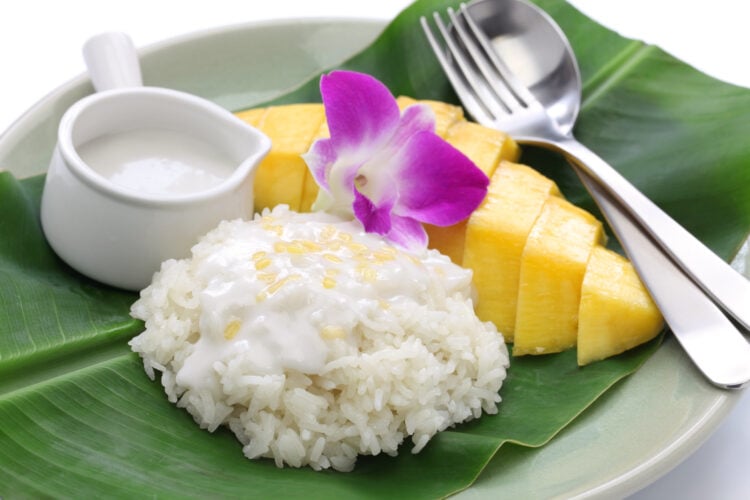The classic Thai dessert known as khao niaow ma muang (mango sticky rice) is heavenly and luscious.
Famous in Thai street food and in Thai restaurants worldwide, this tropical rice pudding is irresistible—and easy to make at home.
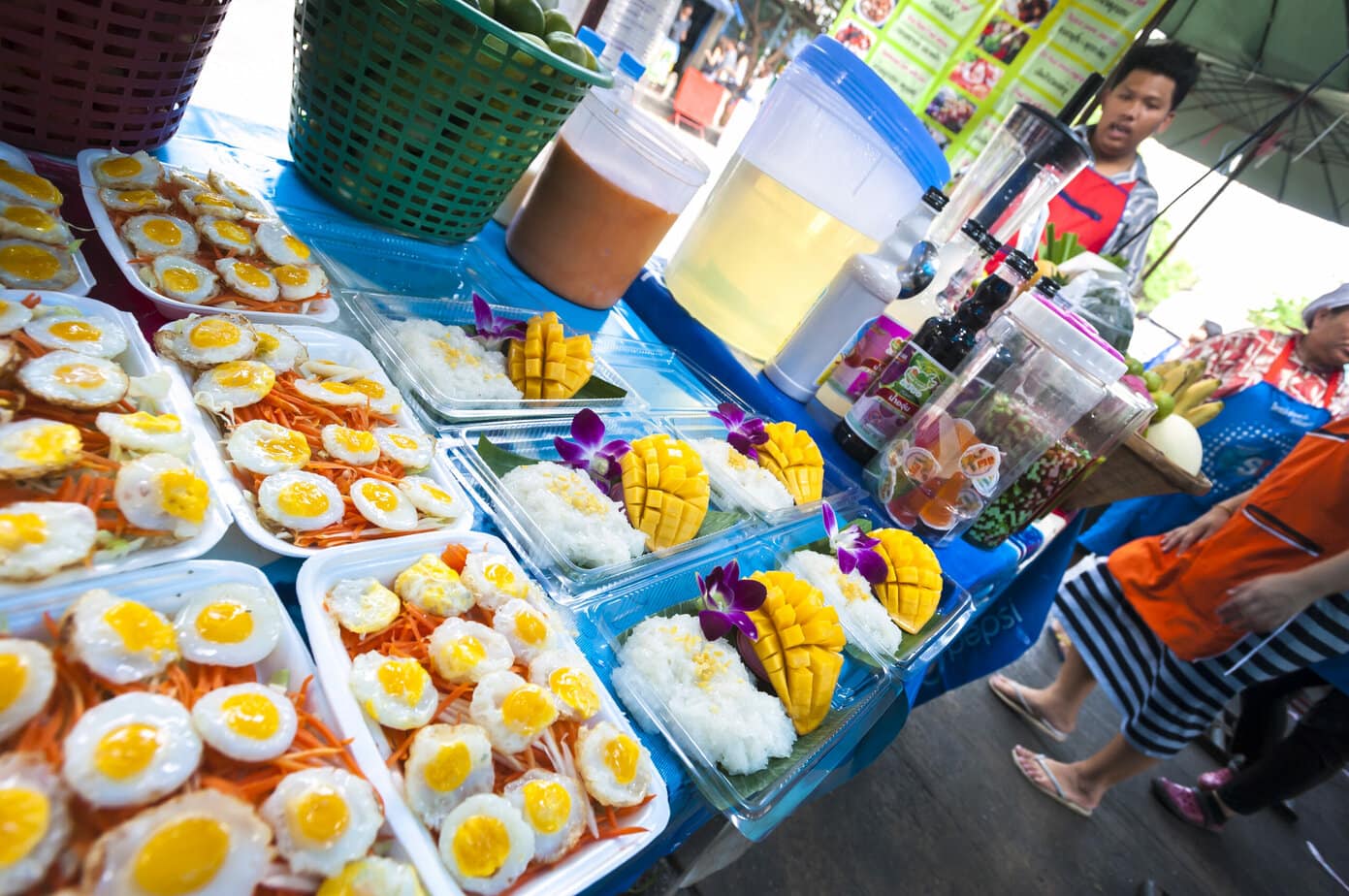
In Thai cuisine, sticky rice is a staple starch in Northern and Northeastern (Isaan) Thai cooking, and it’s also widely used in all kinds of Thai desserts.
For mango sticky rice, the rice is steamed, folded with rich coconut cream and sugar, paired with perfectly ripe sweet yellow mango, finished with extra coconut cream on top, and often sprinkled with crispy yellow mung beans. Anyway, I love it—just be sure you like coconut.
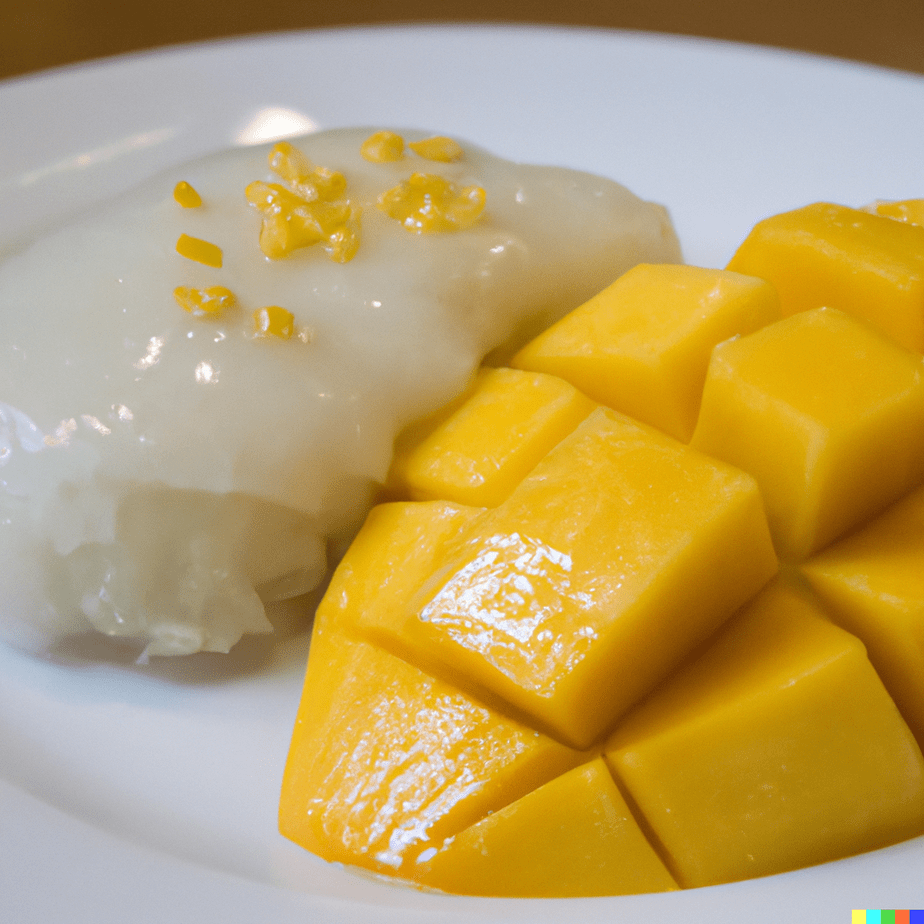
Tips for perfect mango sticky rice
Sweetened sticky rice made with sugar and coconut cream is a popular base for many Thai desserts, and it’s essential to this recipe.
To prepare the sticky rice, you can use my Thai sticky rice recipe. However, you’ll need to rinse it even more thoroughly to remove all the exterior starch from each grain before steaming.
Start by washing the rice about six times, gently rubbing the grains to remove most of the starch. Then let the rice soak in water for six hours. This is the longest step in this mango sticky rice recipe, so plan ahead.
Once you’ve rinsed the rice six times, the water should run clear when you add water again, not milky from the starch. If it’s milky, rinse the rice a few more times.
When making this recipe, if you don’t plan to eat this Thai dessert immediately, it’s best to cover it with a plastic bag or plastic wrap so it doesn’t dry out or crust over.
In Thailand, this type of sticky rice isn’t refrigerated, as it would compromise the texture and flavor, so it’s usually eaten within a few hours of being made. You can refrigerate it, but it won’t be as good.
Ingredients for mango sticky rice
Alright, we’ve covered the sticky rice.
For this recipe, use coconut cream only, called hua kati (หัวกะทิ) in Thai. It’s richer and thicker than coconut milk, higher in fat, and absolutely delicious—I’m drooling as I write this.
Toppings
Both are optional, but they’re commonly served with mango sticky rice in Thailand: extra coconut cream and crispy mung beans.
To make the extra coconut cream, pour the remaining 200 ml coconut cream into a saucepan over medium heat, add a pinch of salt, and stir gently until it just comes to a boil. Transfer to a bowl for serving with your mango sticky rice.
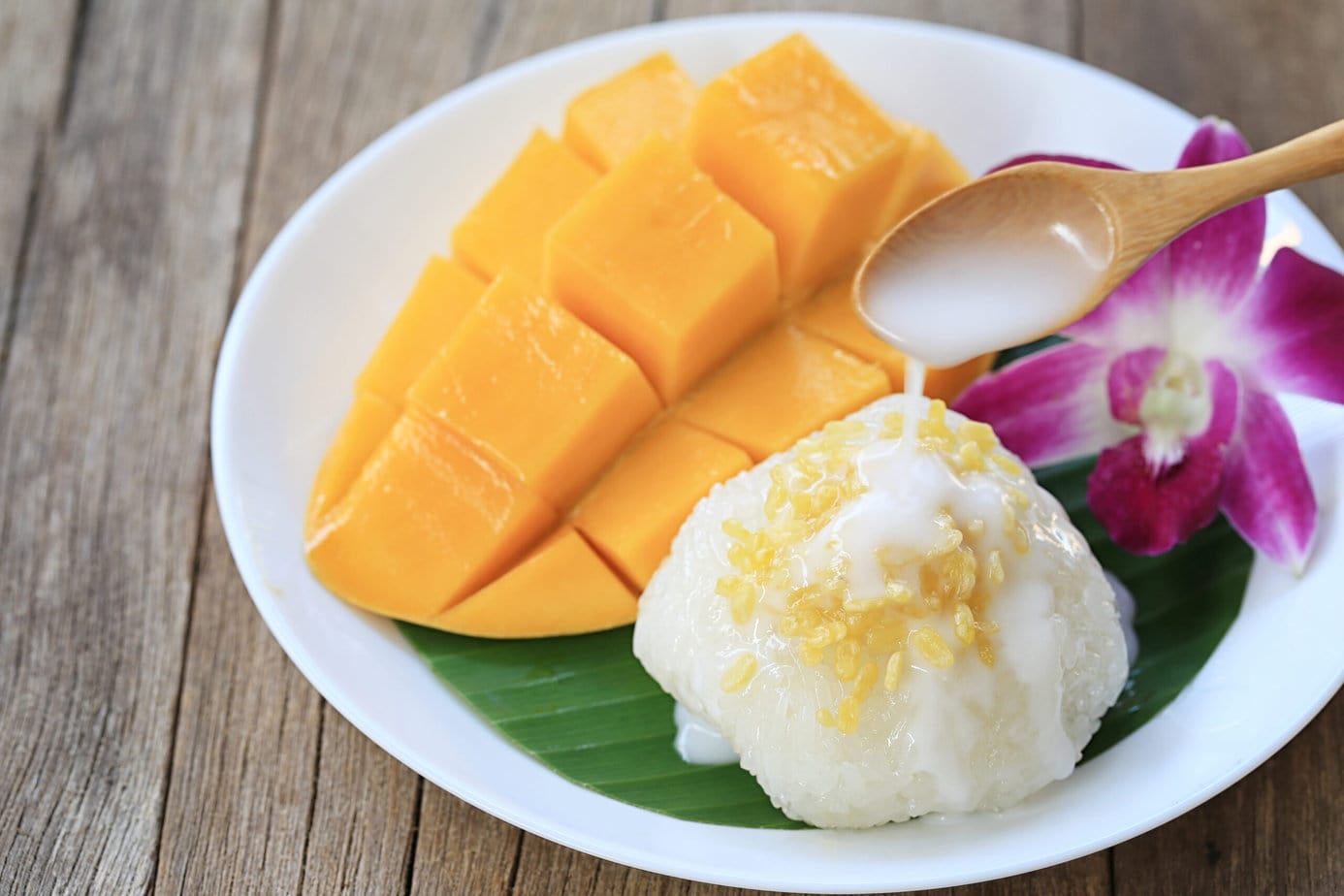
For the yellow mung beans (buy yellow mung dal), set a wok or skillet over low heat and dry-fry the beans for a few minutes, stirring constantly, until lightly golden and crisp.
Mung beans are also used in another, much lesser-known Thai dessert, Med Kanoon.
The mango
Mango sticky rice wouldn’t be complete without mango, and for this recipe you’ll need perfectly ripe, silky-textured mangoes (not stringy ones).
In Thailand, several varieties are used for khao neow mamuang (ข้าวเหนียวมะม่วง), and one of the most common is called mamuang nam dokmai. That said, just choose a mango that looks good at the supermarket.
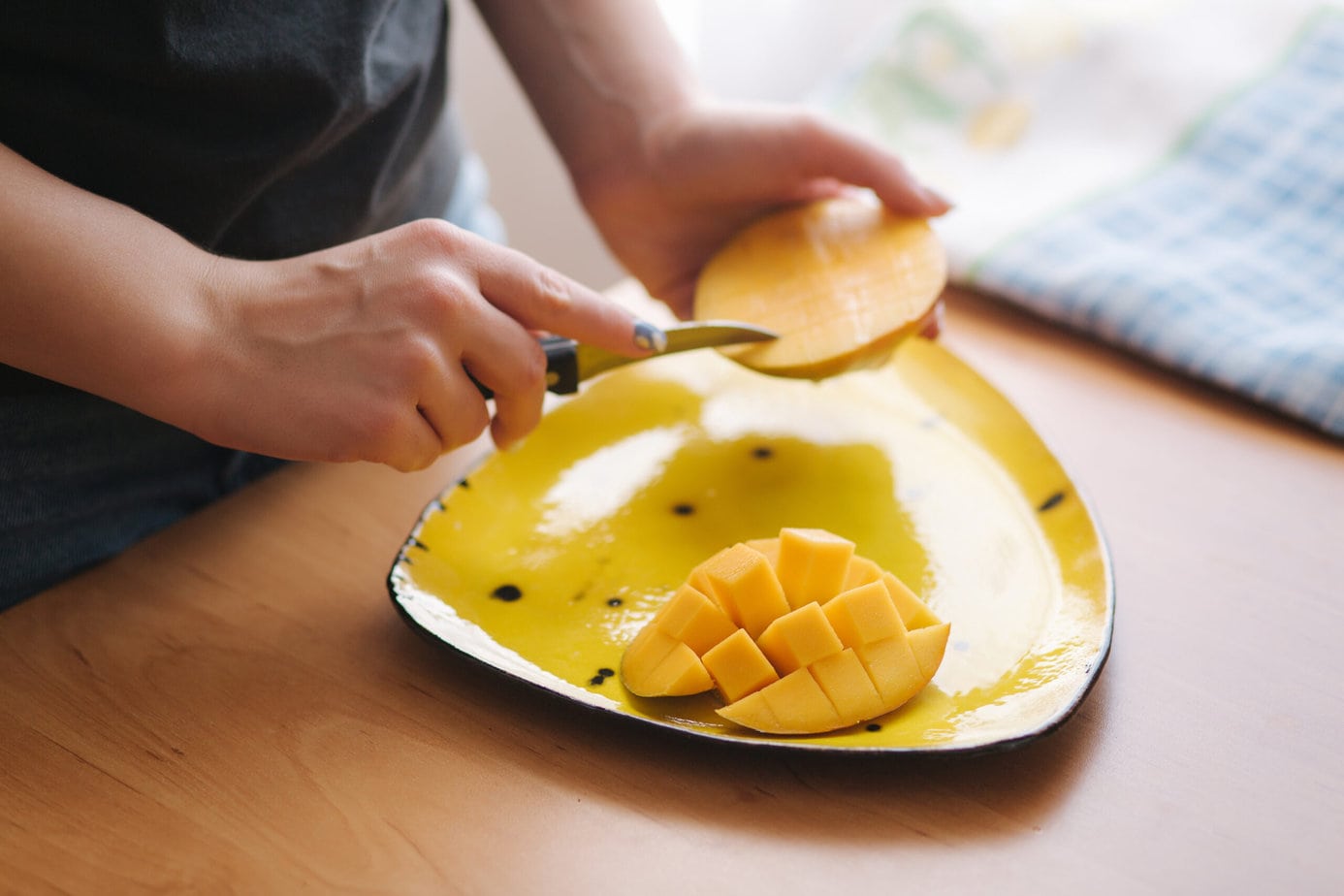
When it comes to Thai cuisine, and Thai desserts in particular, presentation and beauty are extremely important.
Vendors who sell mangoes or serve mango sticky rice take great care with their mangoes, making sure they aren’t bruised and are beautifully yellow.
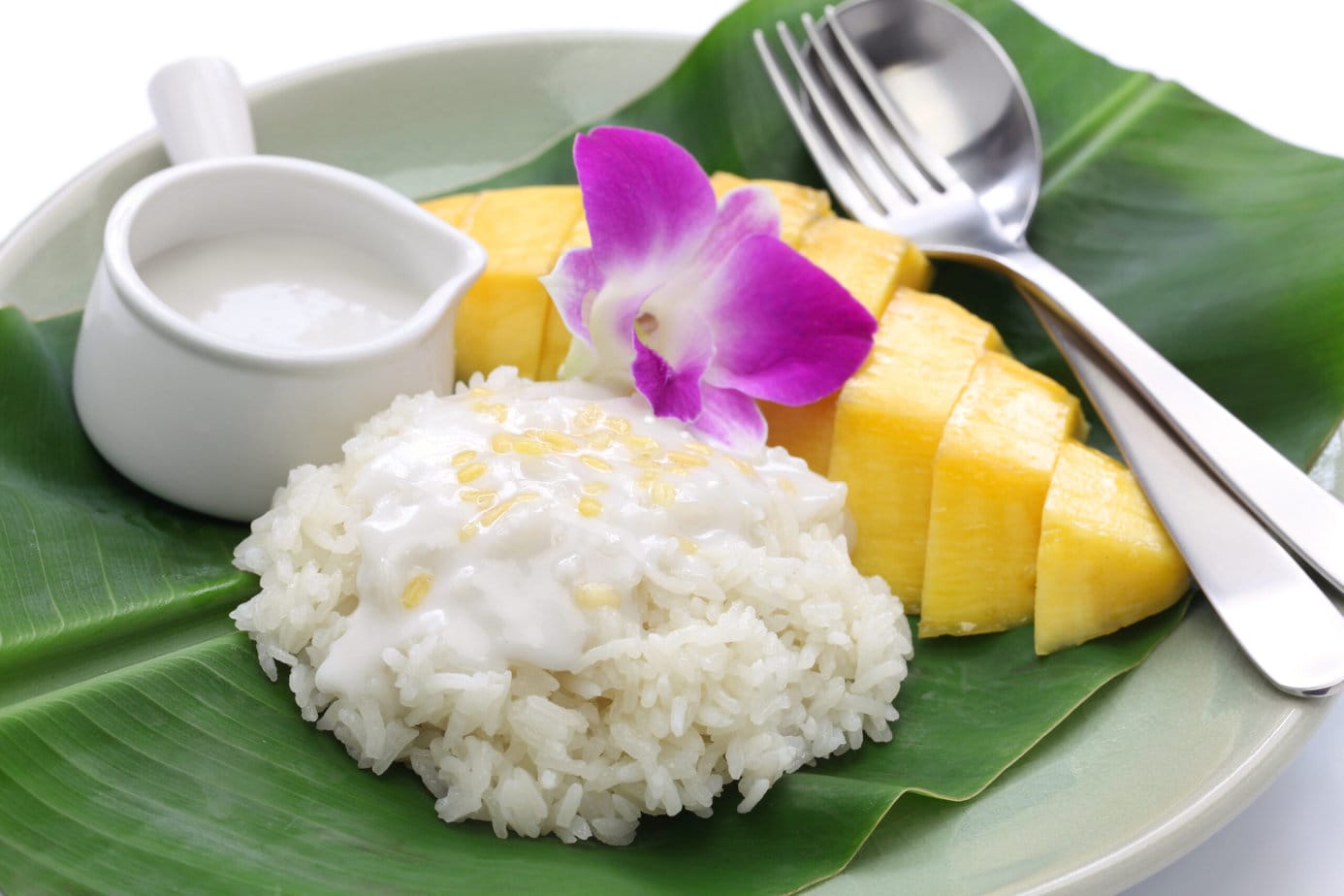
Equipment
Ingredients
- 500 g glutinous rice Thai
- 400 ml coconut cream
- 75 g sugar
- 0.5 teaspoon salt
For the toppings
- 100 ml coconut cream
- 0.5 pinch salt
- very ripe mangoes
- 50 g yellow mung beans
Instructions
- Rinse the glutinous rice 6 to 10 times until the water runs clear and most of the starch is removed. Soak the rice, fully submerged in water, for about 6 hours.500 g glutinous rice
- Using a steamer basket or another type of steamer, steam the glutinous rice for about 15 minutes until tender and fully cooked, then set aside.
- In a saucepan over medium heat, warm the coconut cream for the rice, stirring gently in a circular motion. Add the sugar and salt and continue stirring until fully dissolved. When the coconut cream mixture just comes to a boil, turn off the heat.400 ml coconut cream, 75 g sugar, 0.5 teaspoon salt
- Place the freshly steamed glutinous rice in a mixing bowl. Gradually add the coconut cream mixture, a spoonful at a time, folding it into the rice. Once combined, the rice should be glossy, almost like a slightly grainy pudding. The sticky rice is ready; cover with plastic wrap so it doesn't dry out.
- In a separate saucepan, combine the remaining coconut cream and salt and stir over low heat. Bring to a boil, then turn off the heat and set aside in a bowl. Serve this with the mango sticky rice as a sauce.100 ml coconut cream, 0.5 pinch salt
- In a wok or skillet over low heat, dry-toast the yellow mung beans for a few minutes until golden and crisp. Set aside for topping.50 g yellow mung beans
- For the mango, peel the fruit, slice the flesh from each side of the pit, and cut into large pieces.very ripe mangoes
- To serve, spoon a portion of sticky rice onto a plate, top with mango, sprinkle with mung beans, and serve the extra coconut cream on the side.
